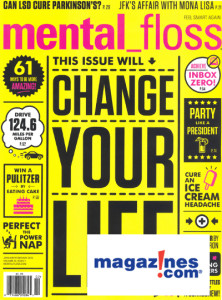Say It For You Magazine Challenge Revived
 The magazine challenge concept was born in the Minneapolis airport back in 2008. To pass the time during an unexpected two-hour layover between flights, I challenged myself to find at least a week’s worth of ideas for the Say It For You blog in a single magazine issue.
The magazine challenge concept was born in the Minneapolis airport back in 2008. To pass the time during an unexpected two-hour layover between flights, I challenged myself to find at least a week’s worth of ideas for the Say It For You blog in a single magazine issue.
Out of that experience came a challenge to all SIFY readers to come up with blog post ideas out of a single magazine of their choice, selecting articles that trigger ideas about their business or practice – what they sell, what they know, what they believe, and what they know how to do.
Now, eight years later, I’m issuing the challenge again. If you do corporate blogging for business, send me a link to at least one blog post you wrote triggered by a magazine article. Or, if you’re not blogging, go ahead and email me a paragraph or two about your business as relates to a magazine article and I’ll publish it here.
The magazine I’m going to use this week is Mental Floss. (If you’ve never been exposed to this bi-monthly publication, you ought to try it – one of the most fun, interesting reads around!). The May 2015 issue has a great two page spread on “The Secret Origin of 7 Extremely Important Actions”.
One of those actions is the “selfie”, which of course we think of as being part of our own era of cell phones. Julie Winterbottom explains that the practice of taking one’s own picture actually goes back more than 150 years. Just months after Louis Daguerre, one of the fathers of photography, had announced his invention, he pointed the lens of the newfangled camera at himself. Of course, as Winterbottom points out, he needed to hold really, really still – exposures for early cameras took up to 15 minutes!
As a business blogging trainer, I think this insight into the history of the selfie could be used for just about any type of business or practice. That’s because, in every industry and every profession, things are not the same as they used to be. Write about those changes. Help readers understand how to get the maximum benefit out of today’s version of the products and services you offer. Share thoughts you have about your work, thoughts triggered by looking at the past, but about things that are relevant today.
What is there about your business, like the selfie, is much, much better today than it used to be?

 Mathematics
Mathematics


Follow us online!